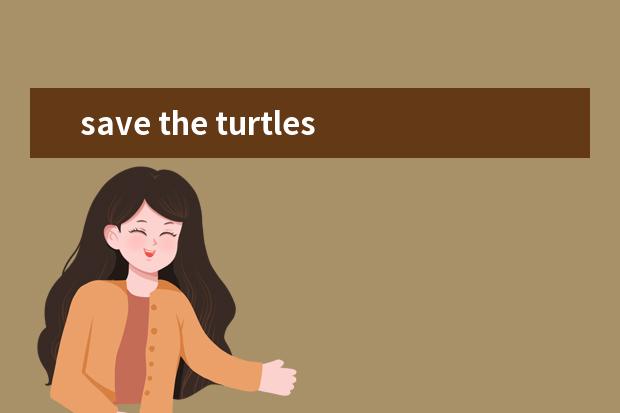雅思剑桥9阅读tortoise save the turtles雅思阅读相关内容,小编在这里做了整理,希望能对大家有所帮助,关于雅思剑桥9阅读tortoise save the turtles雅思阅读信息,一起来了解一下吧!
本文目录一览:

剑桥雅思9的总体趋势分析
Part 1:
【题库范围】:游戏、礼物、*、骑车
【语法范畴】:一般现在时、过去时、表示喜欢/不喜欢、表示频率的时间短语、表示程度的副词
【难度系数】:★★
Part2:
【题库范围】:街道或者集市、一件激动的事情、旅行、帮助人的人
【语法范畴】:一般现在时、过去时、表示心理活动的动词/形容词
【素材范畴】:描写街道/集市/家乡最热闹的地方、描写*的事情/冒险/新的体验、描写旅行/小时候的旅行/长途旅行/将要去的旅行、描写一个帮助人的人/老师/邻居/家人/好朋友/认识的父母亲
【难度系数】:★★
Part3:
【题库范围】:集市和广告、购物态度、购物方式、对待新事物的态度、尝试新事物的方式、旅行的好处和旅行中的问题、社区关系和社区服务
【出题方向】:陈述题、今昔对比题、对未来的展望、影响
【难度系数】:★★★★★ 一、整体难度分析
1、 题目综述;相比以往剑桥系列真题在真实考试当中“百年难得一见”的情况而言,剑9的题目更接近现实考试,比方说Test4的大作文明显是2021年3月5日年考过的题。 2、 难度分析:图表作文对细节性的描述要求更严、难度明显增加,大作文的难度基本不变。
二、A类小作文分析
1、 题目内容:如上表所示(终于出现了历史变迁类的地图),并且“柱、线、饼”三大图齐聚 2、 趋势分析:根据有实战指导意义,过去三年当中的冷门题型(地图以及四饼图)都被收录在剑9中 3、 范文分析:范文开头段清一色的“改写”,中间分段的多少并不重要,高分范文以及考官的范文之共同点在于:用简洁的词句对复杂纠结的数据图进行了巧妙地局部特写。
三、A类大作文分析
1、 题目内容;四篇全是辩论类题目(两篇agree or disagree,一篇discuss,还有一篇outweigh) 2、 趋势分析;比起剑8上面一些极少考的“分析类”题型而言,剑9更像一本“真题集”,并且证明了一个规律:A类考试当中教育类话题才是老大,辩论类的题型屹立不倒 3、 观点诠释:相比传统非黑即白的辩论题,剑9的考题更加考察发散型思维的能力,以Test3大作文为例,除了增加体育设施之外能够改善人们身体素质的办法要自己去想。 4、 范文分析:考官的范文依旧是“只适合观赏不适合模仿”,反而两篇一高一低的学生范文更有借鉴意义。8分范文从头至尾都在围绕着主题中的关键字展开,并且“五大语法技巧”运用的犹如行云流水;4分范文又生动鲜明地向我们展示了导致文章低分的“四条绝路”。
四、备考建议
在不看范文的情况之下先自己卡时间写在答题纸上,然后与别的同学交换批改最后在与高分范文进行对照,把优秀的词句画出来、背会再默写出来。 Test1 Section1 Section2 Section3 Section4 题目:job enquiry 题目:sports world 题目:course feedback 题目:mass stranding of whales and dolphin 场景:renting 场景:introduction of a shop 场景:academy 场景:academy 题型:complete 题型:complete/choice 题型:choice 题型:complete 语音: 语音: 语音: 语音: 难点分析:第一题与第二题录音间隙较长。有两份考察字母拼写 难点分析:选择题中有几个长句需要听懂 难点分析:录音中转折陷阱较多 难点分析:本Section涉及到的生物知识较多 难句难词:hillsdunne 难句难词:autography 难句难词:I’ve been trying speaking up more and I just jump in 难句难词:infestation toxin Test2 题目:student accommodation 题目:parks and open spaces 题目:self-access center 题目:business cultures 场景:renting 场景:travel 场景:academy 场景:academy 题型:form 题型:table/choice/map 题型:choice/complete 题型:complete 语音: 语音: 语音: 语音: 难点分析:需注意连续与失爆的发音 难点分析:地图题答案出现比较密集 难点分析:录音中连续音较多。第一二题答案相隔时间较长,第七到九题答案间隔短 难点分析:文章较长,定位词不易找到。有些填空词较长,注意笔记简写规则 难句难词:meat,bedsit 难句难词:replica,dye 难句难词:our main worry would be not being able to go to a teacher for advice 难句难词:flexible responsibility Test3 题目:room booking 题目:railway park 题目:study skills tutorial 题目:underground house 场景:holiday 场景:general 场景:academy 场景:academy 题型:table 题型:table/match/choice 题型:complete/table 题型:choice/complete 语音: 语音: 语音: 语音: 难点分析:第二题与第三题答案中间录音较长,考生需耐心等待答案 难点分析:配对题答案出现比较密集,对考生的反应速度要求较高 难点分析:该Section为全填空题,需要考生认真读题,判断空位信息 难点分析:有些天空次较长,需注意记录的精确度 难句难词: 难句难词:devote,recruit 难句难词:note-taking,statistics 难句难词:environmentally-friendly Test4 题目:health center 题目:water heater 题目: 题目: 场景:general 场景:general 场景:academy 场景:academy 题型:table/choice 题型:table/match 题型:complete/choice 题型:choice/complete 语音: 语音: 语音: 语音: 难点分析:选择题录音较长 难点分析:图形填空题录音较长,需听懂各部分的用处 难点分析:简答题中干扰信息较多 难点分析:选择题录音较长 难句难词:vaccinate 难句难词:switch,reset,indicator 难句难词:it is more a question of alerting you viewpoint towards academic study 难句难词:predator 整体简析
1、题目难度:普通
2、重点题型:选择/填空/配对/地图题
3、考试趋势:对于选择题要求听懂的信息量大,对于填空题要求定位准确,笔记记录迅速,单词拼写到位。
4、备考建议:考生需增加听力练习的强度,及加强点式听空位的能力。
请问2023年2月23日雅思阅读考试真题及答案
您好,我是专注留学考试规划和留学咨询的小钟老师。选择留学是人生重要的决策之一,而作为您的指导,我非常高兴能为您提供最准确的留学解答和规划。无论您的问题是关于考试准备、专业选择、申请流程还是学校信息,我都在这里为您解答。更多留学资讯和学校招生介绍,欢迎随时访问。
前两天最新一期的雅思考试圆满结束了,真题及答案也已经新鲜出炉,想必大家都非常感兴趣吧。来和小钟老师看一看2023年2月23日雅思阅读考试真题及答案。
Passage 1
文章题材:说明文(人文历史)
文章题目:丝绸之路
文章难度:★★
文章内容:暂无
题型及数量:7填空题+6判断题
题目及答案:
1、robe
2、taxes
3、gold
4、待补充
5、foreign
6、thread
7、待补充
8、T
9、NG
10、F
11、NG
12、T
13、F
可参考真题:C11T3P1:The Story of Silk
Passage 2
文章题材:说明文(自然动植物)
文章题目:猛犸象
文章难度:★★★★
文章内容:文章介绍了猛犸象及其灭绝的原因猜想。
题型及数量:7填空+6匹配
题目及答案:
14. hunting
15. overkill model
16. disease/hyperdisease
17. empirical evidence
18. climatic instability
19. geographical
20. younger Dryas event
21. A
22. B
23. A
24. B
25. B
26. C
可参考真题:C9T1P3:The History of the Tortoise
考试原文:
Mammoth Kill
Mammoth is any species of the extinct genus Mammuthus, proboscideans commonly equipped with long, curved tusks and in northern species, a covering of long hair. They lived from the Ptiocene epoch from around 5 million years ago, into the Hotocene at about 4,500 years ago, and were members of the family Elephantidae, which contains, along with mammoths, the two genera of modern elephants and their ancestors.
A Like their modern relatives, mammoths were quite large. The largest known species reached heights in the region of 4m at the shoulder and weights up t0 8 tonnes, while exceptionally large males may have exceeded 12 tonnes. However, most species of mammoth were only about as large as a modern Asian elephant. Both sexes bore tusks. A first, *all set appeared at about the age of six months and these were replaced at about 18 months by the permanent set. Growth of the permanent set was at a rate of about l t0 6 inches per year. Based on studies of their close relatives, the modem elephants, mammoths probably had a gestation period of 22 months, resulting in a single calf being born. Their social structure was probably the same as that of African and Asian elephants, with females living in herds headed by a matriarch, whilst hulls lived solitary lives or formed loose groups after sexual maturity.
B MEXICO CITY-Although it’s hard to imagine in this age of urban sprawl and automobiles, North America once belonged to mammoths, camels, ground sloths as large as cows, bear-size beavers and other formidable beasts. Some 11,000 years ago, however, these large bodied mammals and others-about 70 species in all-disappeared. Their demise coincided roughly with the arrival of humans in the New World and dramatic climatic change-factors that have inspired several theories about the die-off. Yet despite decades of scientific investigation, the exact cause remains a mystery. Now new findings offer support to one of these controversial hypotheses: that human hunting drove this megafaunal menagerie ( 巨型动物兽群)to extinction. The overkill model emerged in the 1960s, when it was put forth by Paul S. Martin of the University of Arizona. Since then, critics have charged that no evidence exists to support the idea that the first Americans hunted to the extent necessary to cause these extinctions. But at the annual meeting of the Society of Vertebrate Paleontology in Mexico City last October, paleoecologist John Alroy of the University of California at Santa Barbara argued that, in fact, hunting-driven extinction is not only plausible, it was unavoidable. He has determined, using a computer simulation that even a very modest amount of hunting would have wiped these animals out.
C Assuming an initial human population of 100 people that grew no more than 2 percent annually, Alroy determined that if each band of, say, 50 people killed 15 to 20 large mammals a year, humans could have eliminated the animal populations within 1,000 years. Large mammals in particular would have been vulnerable to the pressure because they have longer gestation periods than *aller mammals and their young require extended care.
D Not everyone agrees with Alroy’s asses*ent. For one, the results depend in part on population-size estimates for the extinct animals-figures that are not necessarily reliable. But a more specific critici* comes from mammalogist Ross D. E. MacPhee of the American Museum of Natural History in New York City, who points out that the relevant archaeological record contains barely a dozen examples of stone points embedded in mammoth bones (and none, it should be noted, are known from other megafaunal remains)-hardly what one might expect if hunting drove these animals to extinction. Furthermore, some of these species had huge rangesthe giant Jefferson’s ground sloth, for example, lived as far north as the Yukon and as far south as Mexicowhich would have made slaughtering them in numbers sufficient to cause their extinction rather implausible, he says.
E MacPhee agrees that humans most likely brought about these extinctions (as well as others around the world that coincided with human arrival), but not directly. Rather he suggests that people may have introduced hyperlethal disease, perhaps through their dogs or hitchhiking vermin, which then spread wildly among the immunologically naive species of the New World. As in the overkill model, populations of large mammals would have a harder time recovering. Repeated outbreaks of a hyperdisease could thus quickly drive them to the point of no return. So far MacPhee does not have empirical evidence for the hyperdisease hypothesis, and it won’t be easy to come by: hyperlethal disease would kill far too quickly to leave its signature on the bones themselves. But he hopes that *yses of tissue and DNA from the last mammoths to perish will eventually reveal murderous microbes.
F The third explanation for what brought on this North American extinction does not involve human beings. Instead, its proponents blame the loss on the weather. The Pleistocene epoch witnessed considerable climatic instability, explains paleontologist Russell W. Graham of the Denver Museum of Nature and Science. As a result, certain habitats disappeared, and species that had once formed communities split apart. For some animals, this change brought opportunity. For much of the megafauna, however, the increasingly homogeneous environment left them with shrinking geographical ranges-a death sentence for large animals, which need large ranges. Although these creatures managed to maintain viable populations through most of the Pleistocene, the final major fluctuation-the so-called Younger Dryas eventpushed them over the edge, Graham says. For his part, Alroy is convinced that human hunters demolished the titans of the Ice Age. The overkill model explains everything the disease and climate scenarios explain, he asserts, and makes accurate predictions about which species would eventually go extinct. “Personally, I’m a vegetarian,” he remarks, “and I find all of this kind of gross-but believable.”
Passage 3
文章题材:说明文(人文研究)
文章题目:大师是怎样炼成的
文章难度:★★★
文章内容:待补充
题型及数量:4选择+6判断+4填空
题目及答案:
27、C
28、C
29、A
30、A
31、NG
32、T
33、NG
34、NG
35、F
36、待补充
37、tuition
38、eight
39、four
40、inherited
可参考真题:C10T2P2:Gifted Children and Learning
以上信息希望能帮助您在留学申请的道路上少走弯路。如果您还有更多问题或需要深入探讨,不要犹豫,您可以在我们的留学官方网站上找到更丰富的考试资讯、留学指导和*专家咨询服务。我们的团队始终站在您的角度,为您的留学梦想全力以赴。祝您申请顺利!
save the turtles雅思阅读
您好,福州朗阁培训中心为您解答,您指的是雅思剑桥9的一道阅读真题吧~
答案:
Question 27—30:plants、breathing, reproduction(in any order)、gills、(the)dolphins
Question 31—33:NG、F、T
Question 34—39:three measurements、triangular graph、cluster、amphibious、half way、dry-land tortoises
Question 40:D
考题精解
Questions 27-30
题型:简答题SHORT ANSWER QUESTIONS
解析:这类题型的题干要求都是以特殊疑问句的形式出现,要求考生根据原文提供的信息回答问题,填写答案时考生一定要注意题干中大写的字数要求和限制。
27.
定位词/关键词 transfer from sea to land,before
原文定位 第一段第四句And we mustn't forget the plants, without whose prior invasion of the land none of the other migrations could have happened.
题解 原文这句话已经讲得非常清楚,没有植物的迁移,任何动物都无法完成向陆地的迁徙。transfer from sea to land对应原文中的invasion of land, before对应原文中的prior,what为针对名词词性提问,所以答案是plants。
答案 plants
28.
定位词/关键词 TWO processes, make big changes as they moved onto land
原文定位 第二段第一句Moving from water to land involved a major redesign of every aspect of life, including breathing and reproduction.
题解 此题的解题方式类似多选题,考生在阅读文章时要对文章中列举的两个以上的信息做标记以防需要解答此类题型。题干中的big changes对应原文中的a major redesign。原文的意思是这些物种从海洋到陆地迁移的过程需要经历一系列包括呼吸和繁殖在内的变化。
答案 breathing, reproduction(in any order)
29.
定位词/关键词 physical feature, whales lack
原文定位 第二段第七句They do, however, still breathe air, having never developed anything equivalent to the gills of their earlier marine incarnation.
题解 可用whales定位,题干中的lack对应原文中的having never developed,developed后面的宾语即为答案,这句话的意思是它们虽然可以呼吸,却没有进化出像早期海洋生物那样的用于呼吸的类似腮的器官。
答案 gills
30.
定位词/关键词 ichthyosaurs, resembled
原文定位 第三段第五句和第六句Ichthyosaurs were ... fossils look like dolphins ... in the water.
题解 可用ichthyosaurs定位,题干中的resembled对应原文中的look like,look like的宾语即为答案,这里考生需要注意干扰答案dinosaurs,原文中用contemporary(同时代)描述了ichthyosaurs和the dinosaurs的关系,并未说两者相像。
答案 (the)dolphins
Questions 31-33
题型:判断题TRUE/FALSE/NOT GIVEN
解析:判断题一般都是按照正序,确定了第一个题目在原文中出现的具*置,即可向后直接寻找其他题目的答案。
31.
定位词/关键词 turtles, the first group, migrate back to the sea
原文定位 第二段第八句Turtles went back to the sea a very long time ago and, like all vertebrate returnees to the water, they breathe air.
题解 可用turtles和migrate back to the sea定位,原文只讲了乌龟返回海洋,完全没有提及是不是第一批返回海洋的事。
答案 NOT GIVEN
32.
定位词/关键词 difficult, determine, fossilised remains
原文定位 第三段第三句和第四句You might wonder how we can tell whether fossil animals lived on land or in water, especially if only fragments are found. Sometimes it's obvious.
题解 可用fossilised remains定位,fossilised remains对应原文中的fragments,determine对应原文中whether引导的从句,题干中的difficult与原文中的obvious冲突。
答案 FALSE
33.
定位词/关键词 habitat, ichthyosaurs, determined by the appearance
原文定位 第三段第五句和第六句Ichthyosaurs were reptilian contemporaries of the dinosaurs ... look like dolphins and they surely lived like dolphins, in the water.
题解 该题的定位与前面的第30题重叠,题干中的habitat对应原文中的lived like,第六句中的the fossils指的就是前一句话中的ichthyosaurs,这两句的意思是鱼龙是和恐龙同时代的爬行动物,它拥有鱼鳍和流线型身躯。鱼龙化石看上去很接近海豚并且它们也的确像海豚一样曾经生活在水中。
答案 TRUE
Questions 34-39
题型:流程图FLOW CHART
解析:流程图通常是按顺序考查,所以第一个定位词非常重要。这种题型与SUMMARY题型的要求一样,会对填写答案有字数要求限制,考生一定要仔细查看题干的相关要求。
34.
定位词/关键词 71,a total of
原文定位 第四段第一句Walter Joyce and Jacques Gauthier, at Yale University, obtained three measurements in these particular bones of 71 species of living turtles and tortoises.
题解 首先考生需要了解的一点是,阅读中的流程图基本会针对一个段落进行考查,可用特殊名词71将考题的范围定位至原文第四段。此句中的particular bones指代的是第三段末句中提到的forelimbs。a total of后面所缺失的应该是复数名词,所以答案应该写three measurements。
答案 three measurements
35.
定位词/关键词 the data was recorded, comparing the information
原文定位 第四段第二句They used a kind of triangular graph paper to plot the three measurements against one another.
题解 依照顺序找到这个题目的解题位置,关键在于对plot(用图表作记录)这个单词的理解,它对应题目中的recorded。此外,考生可利用本题空格后括号中的内容解题,comparing the information对应原文中的against one another。a kind of triangular graph paper是他们记录时使用的方式,也即数据被记录在triangular graph上。
答案 triangular graph.
36.
定位词/关键词 land tortoises, of points towards the top
原文定位 第四段第三句中的All the land tortoise species formed a tight cluster of points in the upper part of the triangle.
题解 可用land tortoises定位,它对应原文中的land tortoise species, of points towards the top对应原文中的of points in the upper part,因此of前面的cluster即为答案。
答案 cluster
37.
定位词/关键词 sea turtles, living, species, added to
原文定位 第四段的第四句和第五句There was no overlap, except when they added ... these amphibious species show up on the triangular graph ...
题解 凭借本题空格周围出现的单词很难在原文中找到具体的定位,这时,考生就需要将其与之前的步骤联系起来,利用step 2末尾的sea turtles定位,题干中的added to对应原文中的added, added后面的宾语便是答案。很明显,some species代指的就是下一句中出现的these amphibious species。
答案 amphibious
38.
定位词/关键词 about, up the triangle between the land tortoises and the sea turtles
原文定位 第四段的第五句Sure enough, these amphibious species show up on the triangular graph approximately half way between the ‘set cluster’ of sea turtles and the ‘dry cluster’of land tortoises.
题解 可用between ... and ... 连接的并列结构定位,题干中的about对应原文中的approximately,因此答案即为half way。
答案 half way
39.
定位词/关键词 bones of P. quenstedti and P. talampayensis , both these ancient creatures
原文定位 第四段第九句Both these fossils were dry-land tortoises.
题解 可用bones of P. quenstedti and P. talampayensis定位,题干中的both these ancient creatures对应原文中的both these fossils, were后面的名词即为答案。
答案 dry-land tortoises
Question: 40
题型:多选题MULTIPLE CHOICE
解析:出现在阅读文章最后的一个题目通常考查的是考生对整篇文章内容的理解,也即对文章主旨的把握。
40.
定位词/关键词 the most significant thing about tortoises
原文定位 第六段第一句Tortoises therefore represent a remarkable double return.
题解 文章的最后一段通常是对原文内容的总结概括,第六段的第一句便是该篇文章的主旨句。原文中的double return对应选项D中的from sea to land more than once.此外,考生还可利用排除法来解答该题,选项A和B只是概括了海龟进化中的一些层面,属于以偏概全的选项,C在原文中未涉及。
答案 D
以上就是雅思剑桥9阅读tortoise save the turtles雅思阅读全部内容了,了解更多相关信息,关注雅思无忧。
雅思培训
免责声明:文章内容来自网络,如有侵权请及时联系删除。


 雅思剑9:阅读的深度分析及趋势预测(save the turtles雅思阅读)
雅思剑9:阅读的深度分析及趋势预测(save the turtles雅思阅读)
 save the turtles雅思阅读 剑桥雅思9的总体趋势分析 请问2023年2月23日雅思阅读考试真题及答案
save the turtles雅思阅读 剑桥雅思9的总体趋势分析 请问2023年2月23日雅思阅读考试真题及答案
 请问2023年剑桥雅思阅读真题解析:Thomas Young(save the turtles雅思阅读)
请问2023年剑桥雅思阅读真题解析:Thomas Young(save the turtles雅思阅读)
 剑桥雅思考试全真试题集9的全面解析 求剑桥雅思9 G类答案 save the turtles雅思阅读
剑桥雅思考试全真试题集9的全面解析 求剑桥雅思9 G类答案 save the turtles雅思阅读
 save the turtles雅思阅读(剑桥雅思考试全真试题集9的全面解析)
save the turtles雅思阅读(剑桥雅思考试全真试题集9的全面解析)
 求剑桥雅思9 G类答案 save the turtles雅思阅读 2023年7月10日雅思阅读部分考试答案
求剑桥雅思9 G类答案 save the turtles雅思阅读 2023年7月10日雅思阅读部分考试答案
 请问2023年剑桥雅思阅读真题解析:Thomas Young save the turtles雅思阅读 剑桥雅思考试全真试题集9的全面解析
请问2023年剑桥雅思阅读真题解析:Thomas Young save the turtles雅思阅读 剑桥雅思考试全真试题集9的全面解析
 save the turtles雅思阅读(剑桥雅思9:阅读题型及要点剖析)
save the turtles雅思阅读(剑桥雅思9:阅读题型及要点剖析)
 福州雅思培训朗阁 save the turtles雅思阅读
福州雅思培训朗阁 save the turtles雅思阅读
 剑桥雅思阅读AUSTRALIA’SSPORTINGSUCCESS及答案解析(save the turtles雅思阅读)
剑桥雅思阅读AUSTRALIA’SSPORTINGSUCCESS及答案解析(save the turtles雅思阅读)